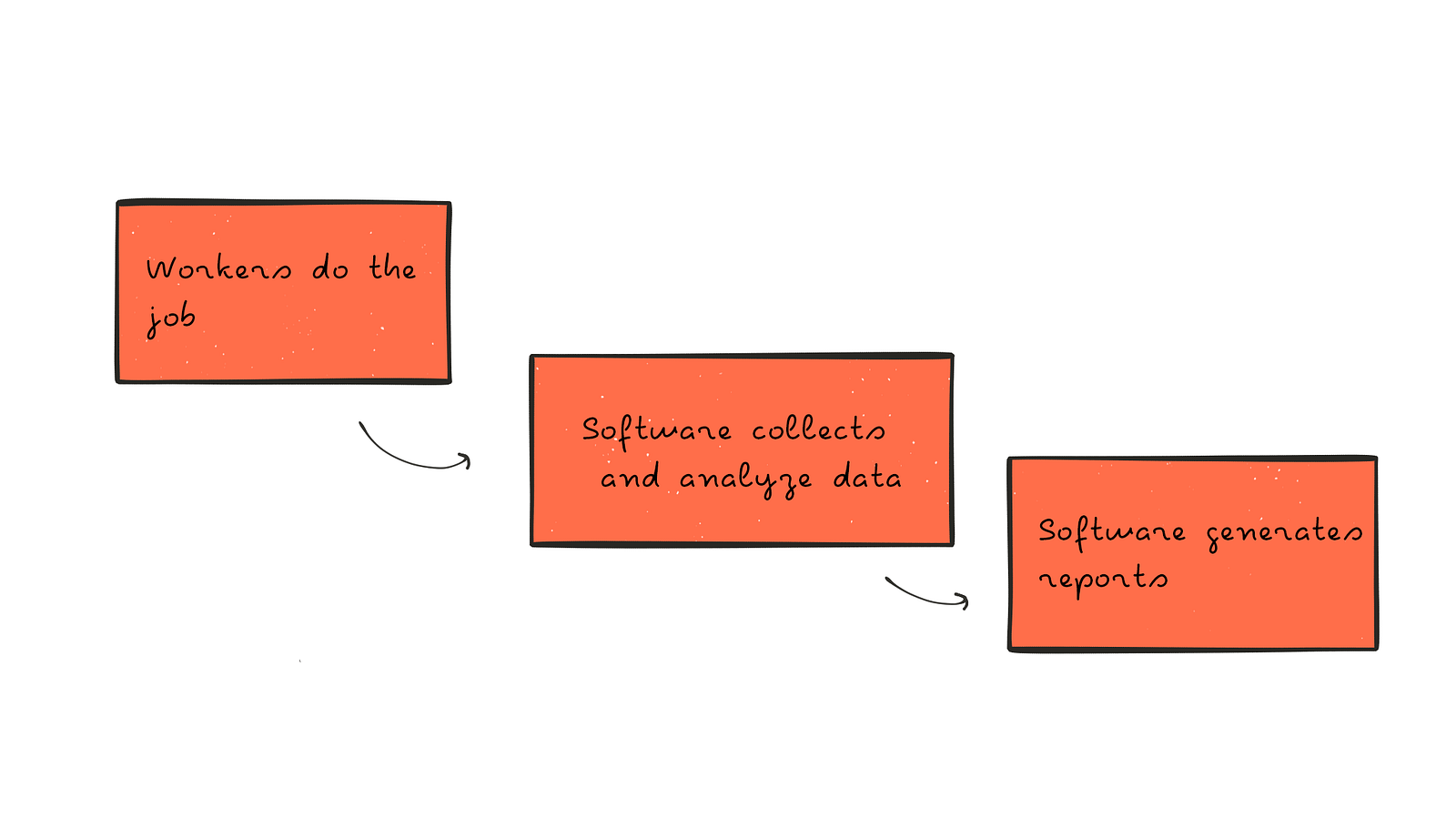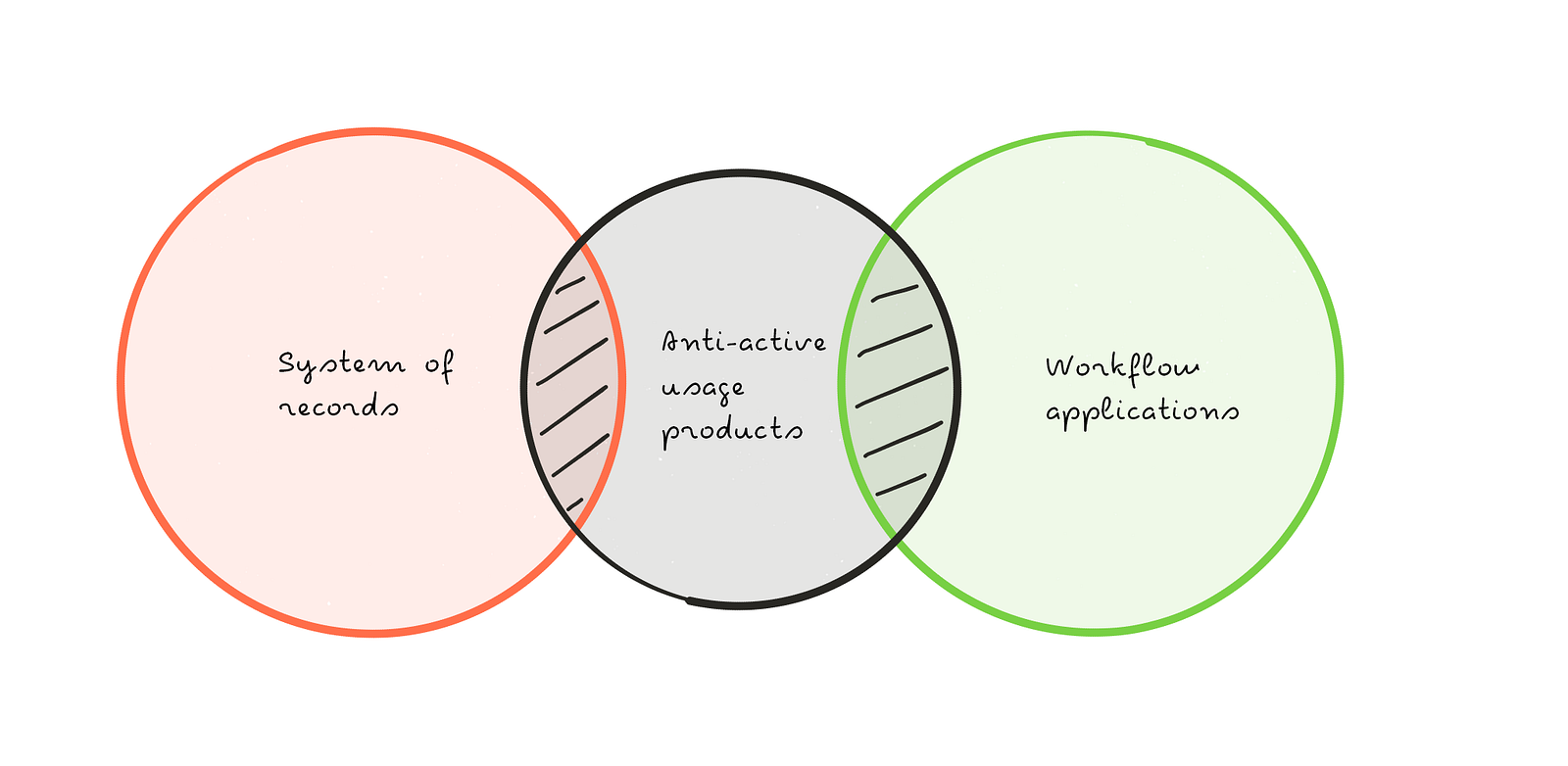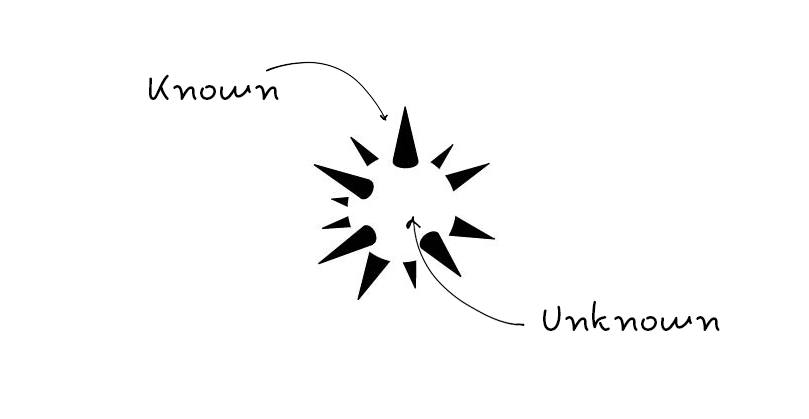The Next Gen SaaS won’t optimize for user engagement
A few weeks ago Hiten Shah explained in a new interesting post why the most successful SaaS companies of the future will focus on usage, just like Facebook. In the write-up, he goes very deep into his explanation bringing examples of world-class SaaS companies like Trello, Slack, and Dropbox that are all building their strategies around this consumer-oriented product approach.He predicts that this is how the next generation of SaaS will look like.
While I was reading Hiten's post, I immediately recalled a frugal email conversation I had last month with Patrick Campbell, at Price Intelligently.
Patrick briefly introduced me to the definition of what he calls "anti-active usage" products.
While at first, this might sound very counterintuitive, it's actually the natural evolution of most of the SaaS products that we know today.
#Defining anti-active usage SaaS products
Harnessing the world of software in a single statement is very hard. Tom Tunguz explained in a post on the blog his vision about software in a simple way.
Software world divides into systems of record and workflow applications.
Systems of record unify data from different sources under a single view. Common applications of Systems of record are CRM and ERP.
Here's how the value chain for systems of record looks like:

Workflow applications enable workers to do work. These products represent a huge portion of the products that we use in our daily work life.
Here's the value chain for workflow applications:

Systems of records and workflow applications have one thing in common, at their core level they need some human interactions.
The paradigm under which you have to actively use something to do a given task or to reach a certain goal is the bedrock of most of the SaaS products out there.
Anti-active usage products flip this model — you don't necessarily need to use the product to get something done because the product (1) understands the problem, (2) works out a solution and (3) outputs a result. Anti-active usage products don't need human interactions at any level of their value-chain.
We can expect in 10 years from now, a good part of today's SaaS product flocking to this new category:

There are many reasons I see why anti-active SaaS products might come in the next 10 years:
1. The scarcity of time
We can build a solid business strategy around things that are stable in time. This is why we create businesses on things that don't change. Time is the scarcest resource and your employees' time is one of the most important assets of your business. Products that don't impact by any means on your team but yet they are able to generate relevant outcomes, can change the rules of the game.2. The tragedy of the commons
The tragedy of the commons is an economic theory of a situation within a shared resource system where individual users acting independently according to their own self-interest behave contrary to the common good of all users by depleting or spoiling that resource through their collective action. The "individual users" in this instance are the SaaS vendors who are all trying to optimize for engagement/product usage. The reliance on this model is not only unsustainable but is demonstrably damaging the environment.3. SaaS switching cost
The tool explosion I've been talking about for a while made companies more flexible, but it also made people waste time jumping back and forth between apps just to accomplish a given task. Not to mention the lack of context they need to do good work. This SaaS tools explosion broke your work into tiny pieces and scattered it across a dozen apps — making it almost impossible to feel on top of things. Anti-active usage products slash the switching costs between products and tools in our workday and centralize the metrics of their output in a single dashboard. These products allow you and your team to concentrate more on a strategic and on a tactic level.4. AI as core product value
What we're going through right now, is a discovery moment where companies use Artificial Intelligence to optimize their core value to serve better customer experience. Amazon, Google, Netflix are all doing this, but AI is not the core value of their products. Amazon is still an e-commerce store, Netflix is still a video entertainment company, and Google is still a media company. We can expect AI from being an attachment that optimizes the core value, the ultimate core value.Let's clarify a few areas where products can be more suitable for this transition.
We can expect anti-active usage products mainly falling into these three categories:
Automated products — anticipate fraudulent payment attacks before they happen, schedule meetings by email
Operational products — flag errors in legal documents, buy/sell stocks, make a cross-sell offer
Single decision taker — give a discount or approve a credit
On the other side, products that require a deep level of human interactions, or empathy are probably still not ready for this transition. Same for all those workflow applications that require some tactical or strategic thinking when using them.
Let's dig in a bit and take the real example of Social Media Scheduler SaaS product:
Traditional workflow for an active user:
- Each Monday your user logs in →
- She enters texts and links for the next week →
- She sets a specific time window (according to data, previous experience, best practices etc..) for the posts to go out →
- She logs in the app to perform additional tweaks on the fly (on average, let's say 10 to 20 times in any given week) →
- She ultimately logs in to monitor KPIs and make sure he's gaining results →
In your ideal world, this what happens. Each Monday your user logs in, she performs some actions in the product, she periodically makes some tweaks and she keeps her eyes on some of the metrics your product pulled out. The more users you have like this, the better.
On the contrary, when your sales and your revenue outrun usage and adoption something bad is happening. Because you know that when customers realize that they are paying for something they are not using, it creates a perfect storm for churn.
With Anti-Active Usage products, this model doesn't work. They don't require your users to be engaged at any level with the product.
This is how a possible workflow would look like:
- → The product automatically collects an interesting piece of content that's worth sharing according to your preference
- → The product schedules those posts in a time window using previous data, audience location, best practices, etc..
- → The product provides an API that displays on a third-party business intelligence product all the outcomes (engagement level, new conversion our audience reach out, etc..)
The end-user doesn't need to do anything in the product. The SaaS doesn't need the intervention of the user during all its value chain. The product is able to work in complete autonomy and yet, it's able to deliver outcomes.
Beyond Product Usage
At its core level every product wants to be able to find an answer to the following question:Am I relevant to my users?
Pretty much every week I see new articles that try to give their interpretation on the topic. One of the good read I saw has been written last week by Josh Elman: The Only Metric That Matters.
Long story short, we answered the question "Do my users care about my product?" with another answer "Are people using your product?".
The vast majority of SaaS products relied for years on the idea that if your users keep coming back to your product to perform a certain action, then they are finding something valuable in what you offer.
This simple equation has been considered for years the bedrock of every successful software product.
Engagement is one of the best predictors of success.
On the other side, if your users are not coming back to your product, they land .. and leave, then you have some growth problem. You user don't stick, and if your users aren't sticky, churn will be high, and you won't have engagement.
In reality, when we try to find to answer the question "Do my users care about my product?" we are trying to measure something that we can't know with certainty.
So we pick up a metric to approximate the actual underlying user behavior. This is what Sriram Krishnan defines in an interesting essay a proxy metric.
The process we ran into when we defined product-usage as the best proxy metric is called reification and it's one of the principles of the well-known Gestalt effect.
Reification is the constructive or generative aspect of perception, by which the experienced percept contains more explicit spatial information than the sensory stimulus on which it is based.

For instance, you perceived a triangle in picture A, though no triangle is there. In pictures B and D the eye recognizes disparate shapes as "belonging" to a single shape, in C a complete three-dimensional sphere is seen, where in actuality no such thing is drawn.
Reification allows you to infer the abstract (unknown) by treating the illusionary contours (known) of a visual system as "real" contours.

We do this natural approximation all the time when we pick up a metric — no exception when we are trying to infer if our users find our product valuable by looking at their usage.

Anti-active usage products break this rule and revert the paradigm by pushing us to think way beyond the idea of retention in terms of product engagement.
When your product works in full autonomy and yet, it's able to deliver outcomes, user engagement is not what you want to optimize for. So while usage and engagement are all good proxy metrics for most of the consumer-facing products, for anti-active usage SaaS products, these are fallacious metrics. In these cases finding the right proxy-metrics is harder, often very counterintuitive and it requires you to think in a holistic way.
0 comments:
Post a Comment